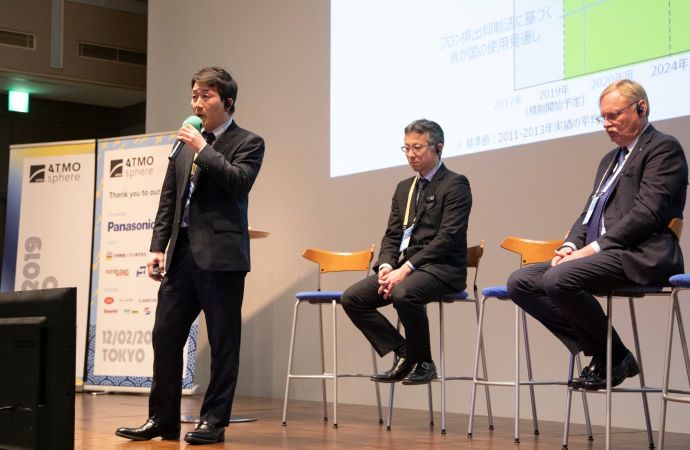Ministry of Economy, Trade and Industry allocates €5.1 million in FY2019, up from €2 million, for green refrigerant technology.

Hideyuki Naoi, Deputy Director, Japan's Ministry of Economy, Trade and Industry, speaking during ATMOsphere Japan 2019
The Japanese government's subsidy aimed at accelerating the development of low-GWP HVAC&R technology is set to increase to €5.1 million (¥650 million) in FY2019 from €2 million (¥250 million) in FY2018, said a representative from the Ministry of Economy, Trade and Industry (METI).
The announcement was made at the ATMOsphere Japan conference on natural refrigerants, held on 12 February 2019 in Tokyo.
"METI is currently intensively engaged in a number of initiatives aimed at the development of [low-GWP HVAC&R] technology," said Hideyuki Naoi, deputy director for METI, who announced the increase. This subsidy is part of a five-year plan which lasts from 2018 through 2022.
The increase comes after Japan's Ministry of Environment (MOE) confirmed In December of last year a €58 million budget for natural refrigerant installations in FY2019.
METI is in charge of the development and introduction of green refrigerant technology while MOE is in charge of the dissemination of those technologies, Naoi explained.
METI previously provided subsidies to Japan's New Energy and Industrial Technology Development Organization (NEDO), which, in turn, commissioned universities and private sector research organisations to develop new technology.
However, Naoi said, "in order to help encourage more intensive development of green refrigerant technology, METI would now be providing these subsidies directly to the private sector."
This will help Japan "achieve its HFC phase down obligation from 2029 onwards, strengthening our efforts to develop and introduce refrigerants using new alternatives," he said.
In June of last year, Japan revised its Ozone Layer Protection Law to control the production and import of HFCs. The new regulation came into force on 1 Jan 2019.
On 18 December 2018, Japan ratified the Kigali Amendment.
According to METI, its projections predict that Japan will have a very difficult time achieving its scheduled HFC consumption reduction targets after 2029.
Related stories



